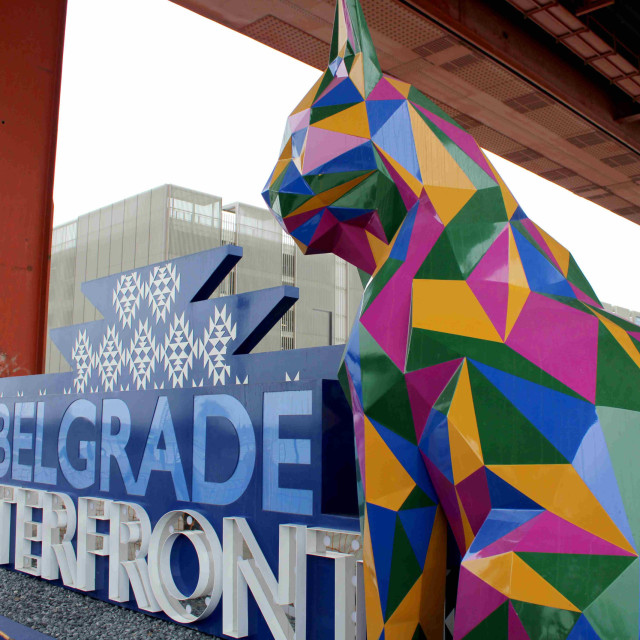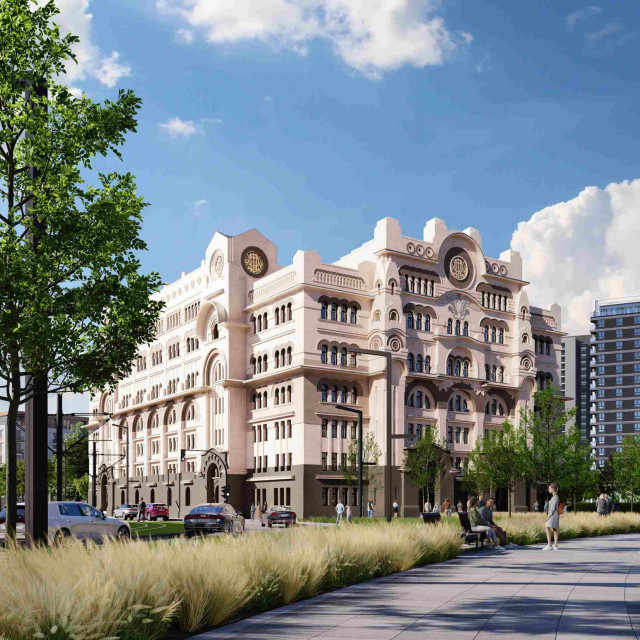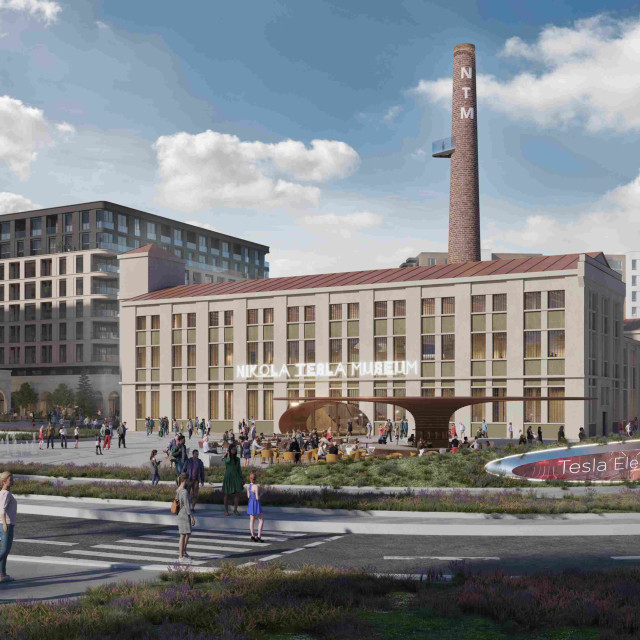The Belgrade Waterfront is not only reshaping the city’s skyline but also enriching the capital’s cultural scene, offering a variety of attractions that put the city on the map of global metropolises. Culture is not just a decoration of daily life, but an essential need. In Belgrade Waterfront, everyone can find something for themselves – from modern artistic expressions to traditional cultural events, allowing each visitor to choose what suits them best. Below, you’ll find a selection of cultural offerings in Belgrade Waterfront that are sure to match your interests. We are confident you’ll find at least one to your liking, and even more sure that you won’t stop at just that.
Art at your fingertips
In Belgrade Waterfront, you’ll encounter works of art the moment you stroll along Sava Promenada or in Sava Park. The promenade is adorned with pieces such as “Lynx” and “Silhouettes”, joined by recently added sculptures “Heaven on Earth” by Nikola Kolja Božović and “Ramonda” by academic painter Mladen Đurović, inspired by the flower that symbolizes the survival of Serbia in the First World War.

The eagle on the fountain in front of Kula Belgrade also symbolizes Serbia. Artistic works can also be found at Galerija, where, alongside the impressive installation “The Heart of Belgrade” by Jelena Stepanov, there are a suspended art installations “Butterflies”, “Waves” and “Linden”. Sava Park is further beautified by the three-part sculpture “Bring sparrows bac to Belgrade” by Andrija Matić and Nikola Knežević, and the “Street lights” installation in the shape of hearts, by Ivana Jelić.
Throughout the year, Sava Promenada hosts concerts, festivals, performances, educational workshops, the traditional Boat Carnival, and street musicians whose music adds to the charm of this beloved Belgrade promenade.
For those who look beneath the surface – The Historical Museum of Serbia and the Archaeological Museum of Serbia
Serbia is about to have museums that reflect its rich history. One of the country’s most important cultural institutions, the Historical Museum of Serbia, will soon be housed in the former building of former main railway station. Plans include the renovation and reconstruction of the interior, which will be adapted for museum use. This building, which holds significant architectural and historical value, was constructed in 1884.

The Archaeological Museum of Serbia will be located in the former old post office building, whose reconstruction is in progress. The interior will be fully tailored for cultural exhibits. The main entrance will face the Sava Square, while the longer façade, with two side entrances, will stretch along Sava Street.
For fans of great minds and brilliant innovations – The Nikola Tesla Museum
The Nikola Tesla Museum is finally significantly expanding its space, allowing the genius of one of Serbia’s and the world’s greatest inventors to shine. The museum will be relocated to the former Paper Factory building of Milan Vapa, also known as the Jugošped building, located on Vojvode Mišića Boulevard.

Two renowned architectural studios – the British Zaha Hadid Architects and the local Bureau Cube Partners – designed the winning solution at the international competition for the reconstruction of the Paper Mill. According to the evaluation of the expert jury, they combined Tesla’s rich heritage and the architecture of old Belgrade with the modern look of the capital in the most original way.
Currently attracting over 170,000 visitors annually, the museum holds the original archive of the famous Serbian scientist. However, due to space limitations in its current location on Krunska Street, visitors have not been able to view all of the artefacts. The new museum building will feature many more exhibits, including a larger number of working models of Tesla’s inventions. Personal items, engineering and electrical equipment, and newspaper clippings will also be on display, offering insight into the social life of the great scientist.
An international competition for a new architectural design for the museum is underway, with work expected to be completed by 2027.
For creatives – Ložionica
The former Ložionica and the Water Tower soon will be transformed into a creative center for cultural events and educational programs. This space will serve as a hub for the intersection of culture, knowledge, and innovation. Ložionica will also house the American Cultural Center. Spanning 4,800 square meters, it will become an artistic paradise for creatives – anyone wishing to break free from corporate constraints. The space will host exhibitions, workshops, classrooms, meeting rooms, presentation areas, and rehearsal spaces. We anticipate the event hall will quickly become the favorite spot in the Ložionica, thanks to its up-to-date equipment, making it an ideal venue for concerts and other gatherings. The Water Tower, part of the complex, will be used for multimedia and digital exhibitions, turning the tower’s interior into a canvas for digital artists.
